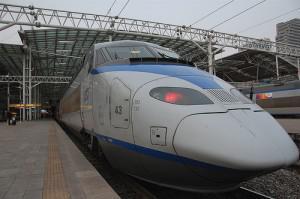 The expansion of high speed rail (HSR) was announced a few years back to much fanfare. While the high passenger capacity and relative economic viability of the Northeast corridor (Washington, DC to Boston) continue to buttress its growth, there has been less news and development about the other lines. Now, the Michigan Department of Transportation (MDOT) is calling on the public to help evaluate the Chicago-Detroit/Pontiac Passenger Rail Corridor Program. Why should the Great Lakes region adopt HSR and what are its roadblocks to success?
The expansion of high speed rail (HSR) was announced a few years back to much fanfare. While the high passenger capacity and relative economic viability of the Northeast corridor (Washington, DC to Boston) continue to buttress its growth, there has been less news and development about the other lines. Now, the Michigan Department of Transportation (MDOT) is calling on the public to help evaluate the Chicago-Detroit/Pontiac Passenger Rail Corridor Program. Why should the Great Lakes region adopt HSR and what are its roadblocks to success?
The benefits of HSR are numerous. They include but are not limited to decreased energy consumption (intercity passenger rail uses 21 percent less energy per passenger mile than autos and 17 percent less than airlines), reduced air pollution and improved air quality, opportunities for transit oriented development, less land required compared to expanding existing highways and airports, fewer environmental impacts on sensitive habitats and water resources, and increased construction and manufacturing jobs (almost 7,000 new permanent jobs in Michigan alone by some estimates as well $138 million of extra household income).
Two of the major obstacles to HSR have to do with the rail line itself. HSR trains travel at upwards of 110-mph and much of the rail infrastructure needs to be upgraded to support these speeds. Also, Amtrak does not own much of the rail line that it travels on. If it were to purchase more track from the Norfolk Southern railroad, it could make crossing and signal improvements that could significantly increase the speed of the trains.
As with most planning and infrastructure challenges, one of the deciding factors is funding. Community groups in Michigan recently conducted a “transportation odyssey” demonstrating both the limitations of the current public transit system and the community’s support for increased investments. Also, a recent study found that states that require comprehensive planning tend to have transportation practices that are more environmentally friendly. Maybe the combination of community support and deliberative planning can set the stage for increased HSR investments in the Great Lakes region.
Image Source

